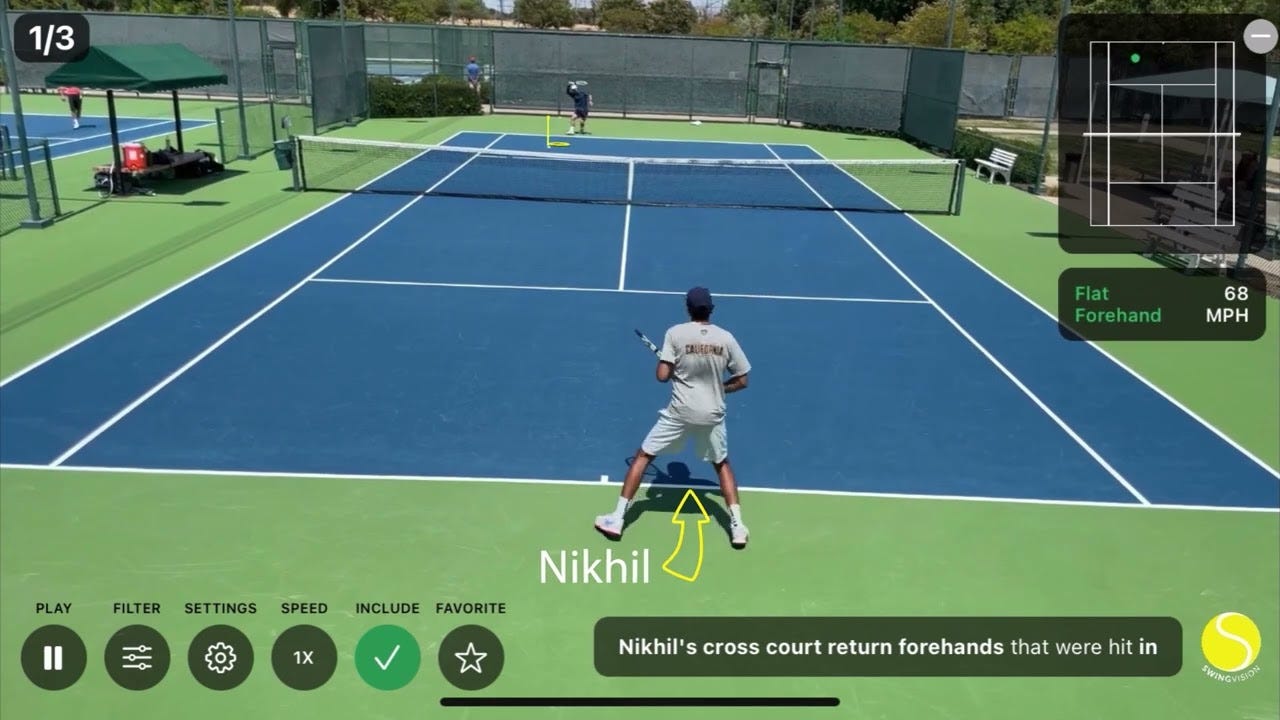📈 Upside Analysis: Enhancing, Not Replacing: How AI Empowers Practitioners in Elite Sports
Artificial Intelligence (AI) is rapidly transforming elite sports, offering tools that elevate training, recovery, performance analysis, and tactical planning. Yet, one major misconception persists: that AI threatens to replace human practitioners. In reality, AI’s true value lies in its ability to empower athletic trainers, strength coaches, sports scientists, and analysts by automating the repetitive, surfacing deeper insights, and optimizing decisions. The human layer—empathy, context, adaptability, and trust—remains irreplaceable.
This analysis explores how AI enhances practitioner roles in elite sports, dispels the automation myth, and introduces key vendors supporting this evolution.
The Rise of AI in Elite Sports
Elite teams operate in environments where milliseconds, inches, and percentage points determine competitive outcomes. Several forces have catalyzed AI’s integration:
Explosion of performance data: Wearables, GPS, force plates, and motion capture now produce high-resolution datasets that demand algorithmic processing.
Accessible machine learning frameworks: Open-source platforms and cloud computing allow sports organizations to develop or license AI models with increasing ease.
Tactical arms race: Teams across leagues seek insights that separate them from similarly talented opponents.
Injury risk management and load optimization: AI has emerged as a crucial tool for balancing performance gains with athlete availability.
The result: AI is no longer an experimental add-on but a foundational part of high-performance infrastructures.
Drivers of AI Adoption in Elite Sports
Data Explosion and the Need for Insight
Elite sports have entered an era of unprecedented data generation. From GPS wearables and force plates to vision-based tracking systems and biometric sensors, the volume and variety of performance, physiological, and biomechanical data has exploded. Practitioners are now tasked with making sense of vast, multidimensional datasets that are often too complex for manual interpretation. AI tools — particularly machine learning and pattern recognition models — provide a powerful means to synthesize, visualize, and extract actionable insights from these data streams, helping coaches and performance staff move from reactive to proactive decision-making.
Demand for Personalization and Precision
There is a growing emphasis on tailoring training, recovery, and rehabilitation protocols to the individual athlete. AI systems can detect subtle variations in load tolerance, biomechanical deviations, and sleep patterns, allowing practitioners to customize interventions with greater accuracy than previously possible. This level of personalization not only improves performance outcomes but also reduces injury risk — a key performance indicator in elite environments.
Efficiency and Workflow Optimization
AI can automate time-intensive tasks such as video breakdown, load monitoring alerts, and injury risk flagging. For overburdened performance and medical staff, these automations allow more time for human judgment and relationship-building with athletes. In environments where staff-to-athlete ratios are tight — such as collegiate or Olympic teams — AI acts as a force multiplier, enhancing capacity without increasing headcount.
Competitive Pressure and Innovation Culture
In leagues and organizations where marginal gains can define championship runs, teams are investing in AI as a differentiator. This is particularly true in Formula 1, the NFL, and European football, where analytics arms races have become part of the sport’s strategic fabric. Beyond competition, there is a broader cultural shift in elite sport that embraces innovation — and AI sits squarely at the intersection of sports science, tech, and competitive advantage.
Challenges in AI Integration for Practitioners
Black Box Models and Trust Deficits
Many AI tools — particularly deep learning models — operate as "black boxes" with limited explainability. Practitioners are rightly skeptical of insights they cannot trace or validate with their own domain expertise. Trust is a crucial ingredient in sports decision-making, and opaque outputs can create friction between data teams and coaches, especially when recommendations challenge intuition or tradition.
Data Quality and Fragmentation
AI is only as good as the data it learns from. In elite sport, data silos, inconsistencies in collection protocols, and incomplete datasets can undermine the reliability of AI-driven outputs. Even sophisticated models can mislead if fed low-quality or context-poor data. Moreover, integrating different systems (e.g., GPS, force plates, video analytics, EMR) into a cohesive AI platform remains a major technical and operational challenge.
Skill Gaps and Interdisciplinary Tensions
There is often a skills mismatch between those developing AI models (data scientists, engineers) and those using them on the field (coaches, physios, S&C coaches). This disconnect can lead to tools that are technically sound but practically unusable. Bridging this gap requires not only better user interface design but also more hybrid professionals who can translate between AI capabilities and performance demands.
Ethical, Legal, and Cultural Barriers
The use of AI raises critical questions about athlete privacy, consent, and the boundaries of surveillance. Some players' unions and governing bodies are beginning to scrutinize the collection and use of biometric data, particularly when tied to contract decisions or return-to-play clearance. There is also cultural resistance in some sports environments, where tradition and human expertise are deeply valued — and where AI is still seen as a threat rather than a tool.
How AI Enhances the Jobs of Practitioners
1. Advanced Decision Support
Practitioners use AI to analyze complex, multidimensional data (biomechanical, physiological, behavioral) that would be impossible to interpret manually at scale. This enables evidence-informed decisions on everything from training volumes to rehab progression.
2. Personalized Programming
AI systems can provide hyper-individualized insights, adapting resistance levels, training modalities, or rest cycles based on an athlete’s real-time status, not just seasonal plans.
3. Real-Time Biomechanical Feedback
Computer vision and motion tracking systems now generate frame-by-frame movement diagnostics — from jump symmetry to hip rotation — giving coaches and therapists tools to correct technique with surgical precision.
4. Proactive Recovery and Health Monitoring
Wearables and predictive algorithms detect early warning signs like sleep deficits, decreased heart rate variability, or neuromuscular fatigue. Practitioners use these insights to intervene before performance drops or injuries occur.
5. Communication Amplification
Dashboards and visualizations powered by AI distill complex data into understandable outputs, helping staff align on decisions and communicate clearly with players and stakeholders.
The Misconception That AI Will Replace Jobs
While fears of automation loom large in many industries, elite sports present a different picture:
AI lacks contextual nuance: It may notice elevated eccentric load, but not whether the athlete is dealing with travel stress, emotional strain, or external life issues — something a human practitioner can detect instantly.
Human trust is critical: Athletes need interpersonal relationships to stay accountable and motivated — something algorithms can’t offer.
AI can’t improvise: Adjusting to unpredictable game-day environments, weather, or athlete mood requires human adaptability.
Intuition and timing: Knowing when to push and when to back off, based on subtle cues, is still an art guided by practitioner experience.
Rather than replacement, AI expands practitioner bandwidth and sharpens their impact.
Current Use Cases of AI by Practitioners
Key Vendors Enhancing Practitioner Roles
1080 Motion:
This vendor focuses on enhancing speed and power training through advanced technology. Their core features include isokinetic resistance and real-time force/velocity feedback. They utilize AI capabilities for real-time adaptive resistance based on neural readiness, requiring their specific 1080 Sprint and 1080 Quantum hardware. Visit their website at https://1080motion.com/.
Beyond Power:
Beyond Power, which makes the Voltra device, specializes in adaptive resistance training with digital weight and app-based control. Their AI capabilities center around force curve adaptation and fatigue tracking to optimize workouts. The Voltra V-Stack is their primary hardware offering, and they are utilized by NBA and college teams. You can find more information at https://www.beyond-power.com/
Second Spectrum (Now Genius Sports):
This vendor provides tactical and spatial analysis using 3D tracking and player movement heatmaps. Their Spatial AI delivers predictive modeling for enhanced strategic insights. They leverage broadcast video feeds as their hardware input and are adopted by leagues like the NBA and EPL. Explore their solutions at https://www.secondspectrum.com/
Aris:
Aris focuses on return-to-play (RTP) protocols and force profiling, offering jump/load diagnostics and fatigue signals. Their AI provides predictive insights derived from asymmetry and force-time curves. They require their proprietary Aris force sensors and plates for data acquisition. Learn more about their technology at https://aristraining.com/
Playermaker:
Playermaker specializes in lower-limb load monitoring through bilateral loading and asymmetry flags. Their AI employs gait-based learning and movement pattern detection. They utilize foot-worn pods for data collection and are used in soccer and ACL rehab clinics. Their website is https://playermaker.com/
SwingVision:
SwingVision focuses on tennis skill development by analyzing AI stroke analysis, ball placement, and court coverage. Their AI capabilities involve computer vision for biomechanics, utilizing the iPhone or iPad as the hardware. They cater to ITF, NCAA, and individual tennis athletes. Check out their offerings at https://swing.vision/
WHOOP: WHOOP centers on recovery optimization through HRV, sleep score, and strain tracking. Their AI provides readiness scoring based on multivariate data collected from their wearable band or patch. They are popular among athletes in the NFL, NHL, and CrossFit. Visit their website at https://www.whoop.com/
Orreco: Orreco provides athlete optimization services through comprehensive biometric data analysis and recovery insights. Their AI-powered platform delivers performance and recovery predictions to elite sports teams and organizations. The specific hardware required varies depending on the tailored solution they provide. You can find more details at https://www.orreco.com/.
ActionApps: ActionApps focuses on performance analysis, offering video analysis and data integration capabilities. Their AI delivers data-driven insights and automated tagging functionalities. The hardware requirements can vary based on the specific application and integration needs of sports teams and coaching staff. Their website is https://actionapps.com/
Recommendations to Teams
Empower Practitioners First: Avoid AI solutions that bypass the practitioner. Practitioners should remain the interpreters and communicators of data to athletes.
Invest in AI-Literate Staff: Upskill practitioners in data literacy and AI interpretation to avoid blind trust in algorithms.
Choose Systems that Integrate: Prioritize solutions with APIs or compatibility with your Athlete Management System (AMS) to ensure seamless workflows.
Establish Ethical Use Protocols: Define clear boundaries for how athlete data is used, stored, and interpreted — with practitioners involved in the process.
Test for Real-World Utility: Pilot tools in live environments. The best AI systems are those that fit into existing routines and reduce—not add to—cognitive burden.
Conclusion
The rise of AI in elite sports represents an extraordinary opportunity—not a threat—to practitioners. When designed and deployed with human users in mind, AI acts as an intelligent assistant that automates data processing, enhances decision precision, and expands individualization.
Practitioners remain irreplaceable stewards of performance and health — they interpret not just numbers but nuance. By embracing AI as a partner, elite teams unlock a future where technology and human expertise work in concert to push the boundaries of what's possible.
You may also like:
Upside: How AI is reshaping pro sports
AI start-ups received funding worth $89.2 billion from 6,786 VC investors during 2021, which is the highest among all the technology themes. As a result of that AI has become a hot topic in the investment and the tech community as a whole.












